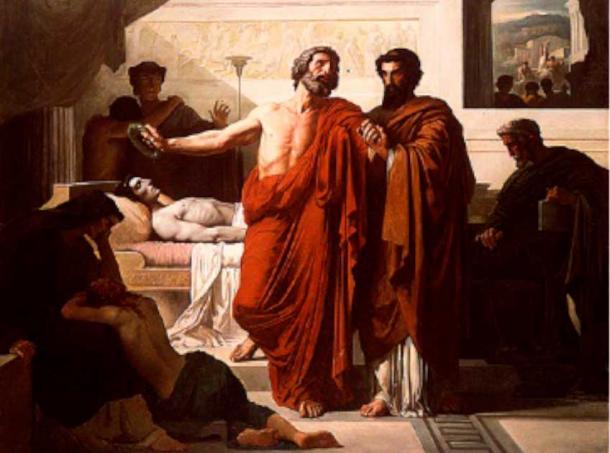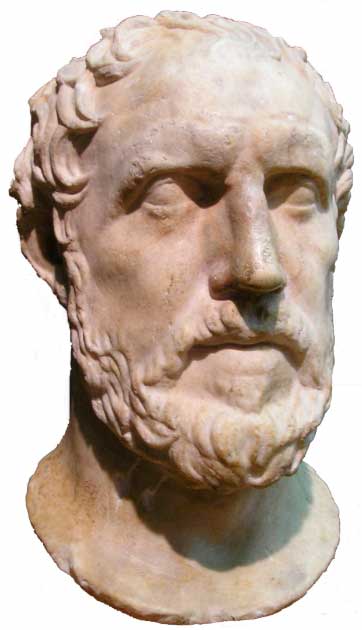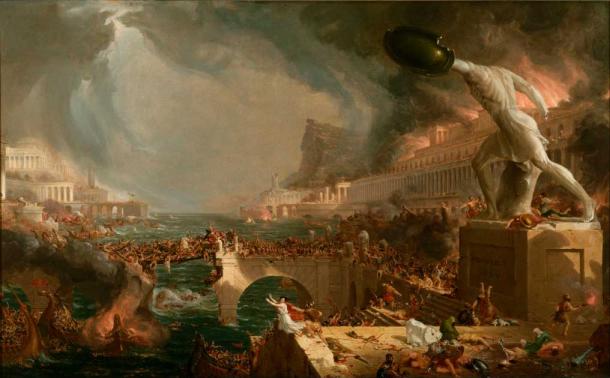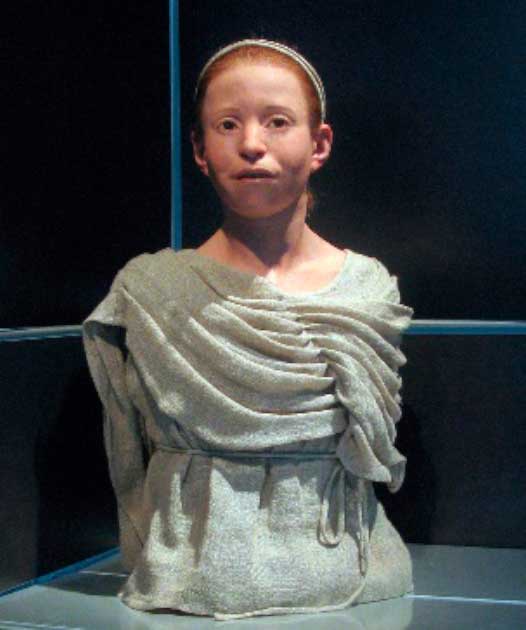
The Plague of Athens Killed Over a Quarter of the City's Population
Pandemics and plagues seem to be the flavor of this decade, occurring at regular intervals throughout history. Some pandemics have been nipped in the bud due to effective collective action or by strokes of luck, occurring in sparsely populated areas. Others, deadly in both origin and effect, have devastated populations, and none like the Great Plague of Athens which swept through the ancient city in 430 BC, at the height of the Peloponnesian War, wiping out a whopping fourth of the entire populace, with some estimates saying a third of the population died!
A Plague within a War: Utter Annihilation
Claiming close to 100,000 (or more) lives, the plague and the war (which would last 27 years) collectively crippled Athenian society. The pestilence would return in 429 BC and again in the winter of 427. Modern researchers have posited nearly thirty pathogens as responsible for the plague of Athens, although its origins remain a medical mystery to this very day. It was the most lethal episode of illness of anywhere in the history of classical Greece.
- The Peloponnesian War: Intrigues and Conquests in Ancient Greece
- The mystery behind the plagues that have killed millions
Originating in the port area of Piraeus, locals began being afflicted by a mystery disease never seen before. At the same time, similar outbreaks were reported on other Greek islands, including Lemnos in the north Aegean. Rumors began circulating in Athens, alleging poisoning of the water sources and wells by the Spartans, the enemy at the time. Within weeks, the disease had spread to the innermost regions of the city, affecting all strata of society, and all age groups.
What compounded the misery of the Athenians was Pericles’ short-sighted strategy, which sought to bring rural Atticans into the walled city to fight the Spartans. This only increased the rate of transmission and contagion, particularly among the Athenians, who were put into even more unsanitary conditions.
The Spartans were not affected at the same rate at all. In fact, Pericles himself would fall victim to his policies, losing his life in the process, although he was first removed from his perch as official strategist.
- Pericles: The Charismatic and Powerful Politician of Ancient Greece
- The Antonine Plague and the Downfall of the Roman Empire

Pericles mismanaged the plague of Athens, which caused the death of Pericles, his son, and up to a third of Athens. Pericles at the deathbed of his son, painting by François Chifflart, 1851 (VladoubidoOo / CC BY SA 3.0)
Origins and Symptoms of the Plague of Athens: A Tale of Human Endurance?
Historian Thucydides (460-400 BC), a survivor of the deadly disease himself, authored the History of the Peloponnesian War, and wrote about the mysterious ailment. This text is the primary source about this disease; Thucydides believed that it had originated in eastern Africa in the present-day Sudanese area (then ancient Ethiopia), with the sickness travelling north and across the Mediterranean.
“[P]eople in good health were all of a sudden attacked by violent heats in the head; redness and inflammation of the eyes; throat and tongue quickly suffused with blood; breath became unnatural and fetid; sneezing and hoarseness; violent cough; vomiting; retching; violent convulsions; the body externally not so hot to the touch, nor yet pale; a livid color inkling to red; breaking out in pustules and ulcers,” he wrote in great detail. “A plague as great as this and with such devastating consequences that it had no similarity in nothing else in human history”.
Thucydides also poignantly wrote about the despair and utter hopelessness that would beset a person who had contracted the disease. Due to the lack of medical diagnosis at the time, people believed that something had arisen that would be impossible for the human capacity to endure. Eventually, this led to a breakdown in traditional values, as self-indulgence replaced honor, and the fear of both God and man was eliminated.

Bust of the ancient Greek general and historian Thucydides, modernity’s primary source on the 4th century BC plague of Athens (Public Domain)
Just like the COVID-19 pandemic overwhelmed the entire medical industry, and all those who were connected with it in a direct or indirect capacity, the Great Plague of Athens took a toll on all those who cared for the sick. Once physicians were overwhelmed and out of the picture in terms of caregiving, all citizens, including family members and loved ones, were severely at risk – in fact, death was generally the consequence.
Corpses began piling up on Athenian streets, preventing even the performance of elementary rites for burying the dead. It would be common for several bodies to be cremated on the same pyre at the same time.
Only those who recovered from the deadly disease, and lived to tell the tale, were capable of providing love and care to their family members. Infection fortunately brought with it immunity; no one seems to have been re-infected, at least not fatally (a clear divergence from the current COVID-19 pandemic). Yet most survivors reported some long-lasting effects – loss of memory, damage to fingers, eyes, toes, and even genitals.
Plague of Athens Led to a Breakdown in Social Hierarchy
The social effects too were disastrous; almost overnight, rich and elite citizens became paupers, while some poor citizens got lucky and were able to appropriate a wealthy man’s assets. The legal system was in disarray, as the fear of the plague trumped the need for justice or equality.
Most began believing in prophecies of doom, particularly the ancient Oracle of Delphi, thinking that the gods had unleashed their wrath on common folk, and the Spartans were the harbingers of this. The Athenians consulted the Oracle at Delphi and sent emissaries to other sanctuaries of note to seek divine intervention.

Citizens of Greece felt abandoned by the gods during the Great Plague of Athens, leading to societal breakdown. Painting by Thomas Cole, Destruction from The Course of Empire series, 1836 (Public Domain)
Modern Difficulty Diagnosing the Plague of Athens
What makes it difficult to tie this disease down to a particular pathogen, like ebola, malaria, influenza, measles, or cholera, is that Thucydides was not a medical scholar. He had no medical expertise or knowledge and authored his treatise a decade after the event itself.
His description of symptoms does not fit into any understood modern form of disease. It is entirely possible that his narrative was exaggerated and ahistorical, making reconstruction of this period particularly difficult.
In 1994-95, a mass grave of 150 people from this time period was unearthed from Kerameikos in Athens, and several theories were posited as to who they were. Since they were buried hurriedly, and with scant respect for the dead that is otherwise generally in place, a team of Greek scientists concluded that these were victims of the plague of Athens.

Α reconstructed appearance of Myrtis, an 11-year-old girl who died during the plague of Athens and whose skeleton was found in the Kerameikos mass grave (Tilemahos Efthimiadis / CC BY SA 2.0)
A study published a decade later from the dental records of three victims found a 93% similarity to typhoid, but this theory was rejected in the mainstream for being too simplistic and full of loopholes. Moreover, symptomology was inconsistent, and the rapid onset of the Athenian plague does not fit in with the general drift of typhoid.
The plague of Athens remains a mystery, but the recent uncovering of mass graves from the ancient period offers new hope that a definitive diagnosis is around the corner. With modern techniques of DNA analysis progressing rapidly over the last two decades, it is only a matter of time before the disease that struck ancient Athens can be scientifically decoded accurately.
Top image: The plague of Athens killed between 25-33% of the ancient city’s population, yet what happened is still a mystery. This oil painting by Michael Sweerts, circa 1652, is called “Plague in an Ancient City,” and some scholars interpret it as a depiction of the Athenian plague that broke out in 430 B.C. Source: Public Domain
By Sahir Pandey
References
Bass, G. June 10, 2020. The Athenian Plague, a Cautionary Tale of Democracy’s Fragility. The New Yorker. Available at: https://www.newyorker.com/culture/culture-desk/the-athenian-plague-a-cautionary-tale-of-democracys-fragility.
Horgan, J. August 24, 2016. The Plague at Athens, 430-427 BCE. Available at: https://www.worldhistory.org/article/939/the-plague-at-athens-430-427-bce/.
Kelaidis, K. March 23, 2020. What the Great Plague of Athens Can Teach Us Now. Available at: https://www.theatlantic.com/ideas/archive/2020/03/great-plague-athens-has-eerie-parallels-today/608545/.
Littman, R.J. 2009. The plague of Athens: epidemiology and paleopathology. Mount Sinai Journal of Medicine, 76 (5). Available at: 10.1002/msj.20137.
Martin, C.S. May 20, 2021. The Plague of Athens killed tens of thousands, but its cause remains a mystery. Available at: https://www.nationalgeographic.com/history/history-magazine/article/plague-athens-killed-tens-thousands-but-cause-remains-mystery.
The Great Plague of Athens: Lessons from the Past. March 24, 2020. Greek Traveltellers. Available at: https://greektraveltellers.com/blog/the-plague-of-athens
















Comments
At that point, Athens was mix of semitic and gentile people, who of course have different cultures and genetic origin – a recipe for the spread of disease. Of course, we also see that today, with Africans and Asians added to the dicey mix. I would advocate that each genetic type have their own medical industry, to protect their own, possibly from diseases innocently carried by the others.
Nobody gets paid to tell the truth.